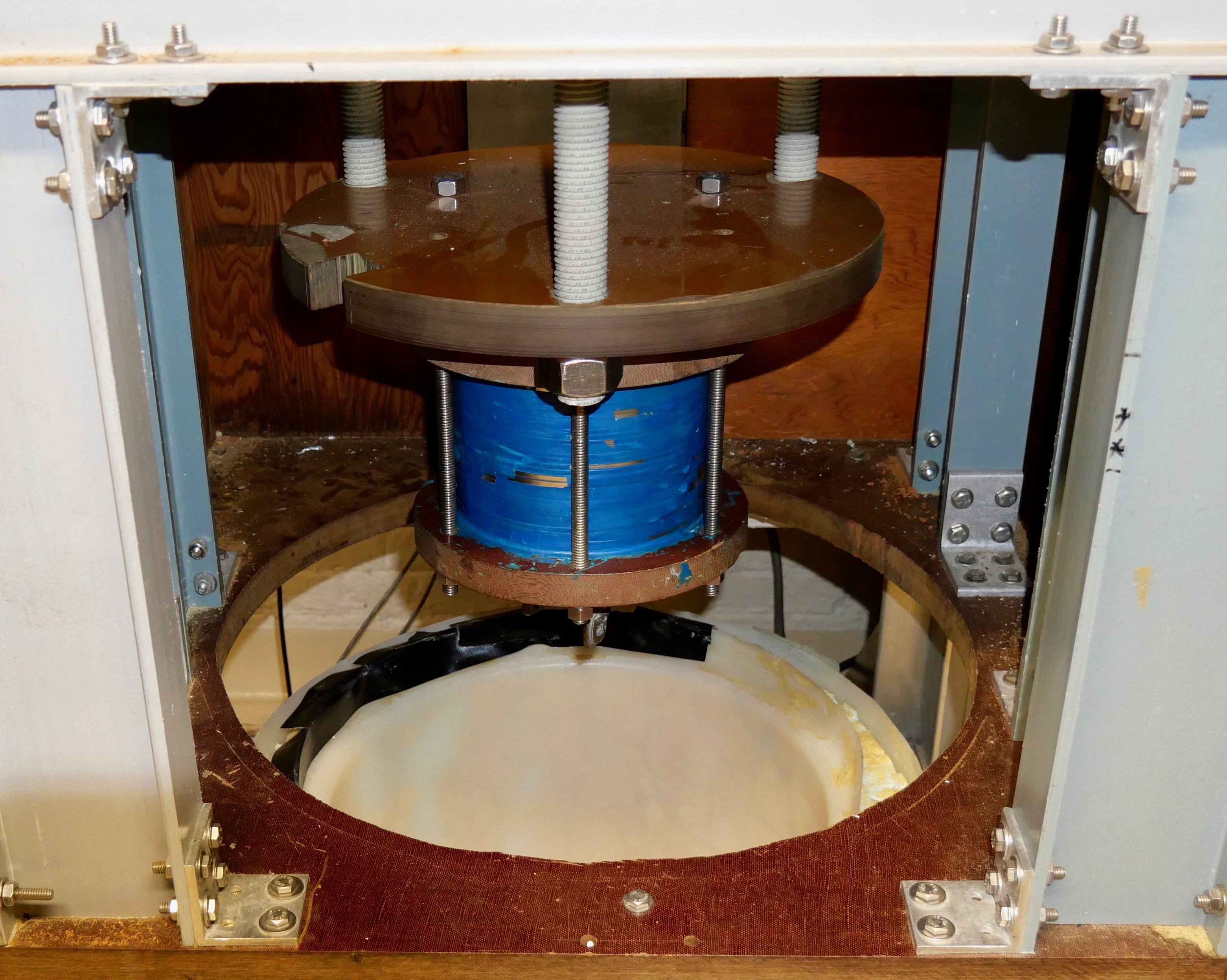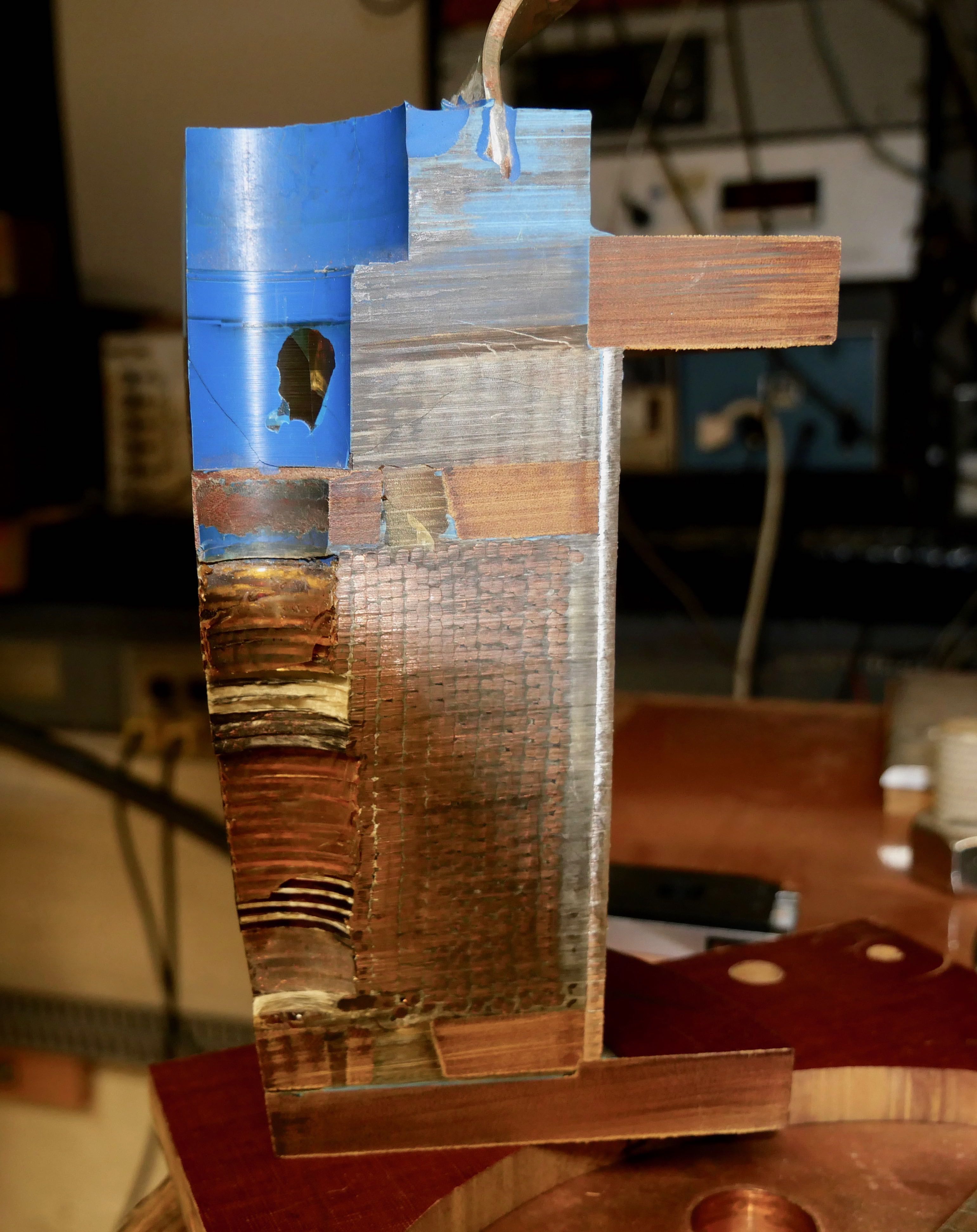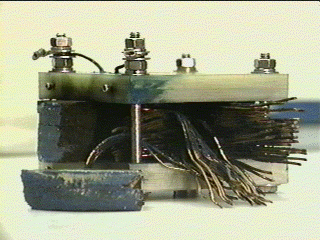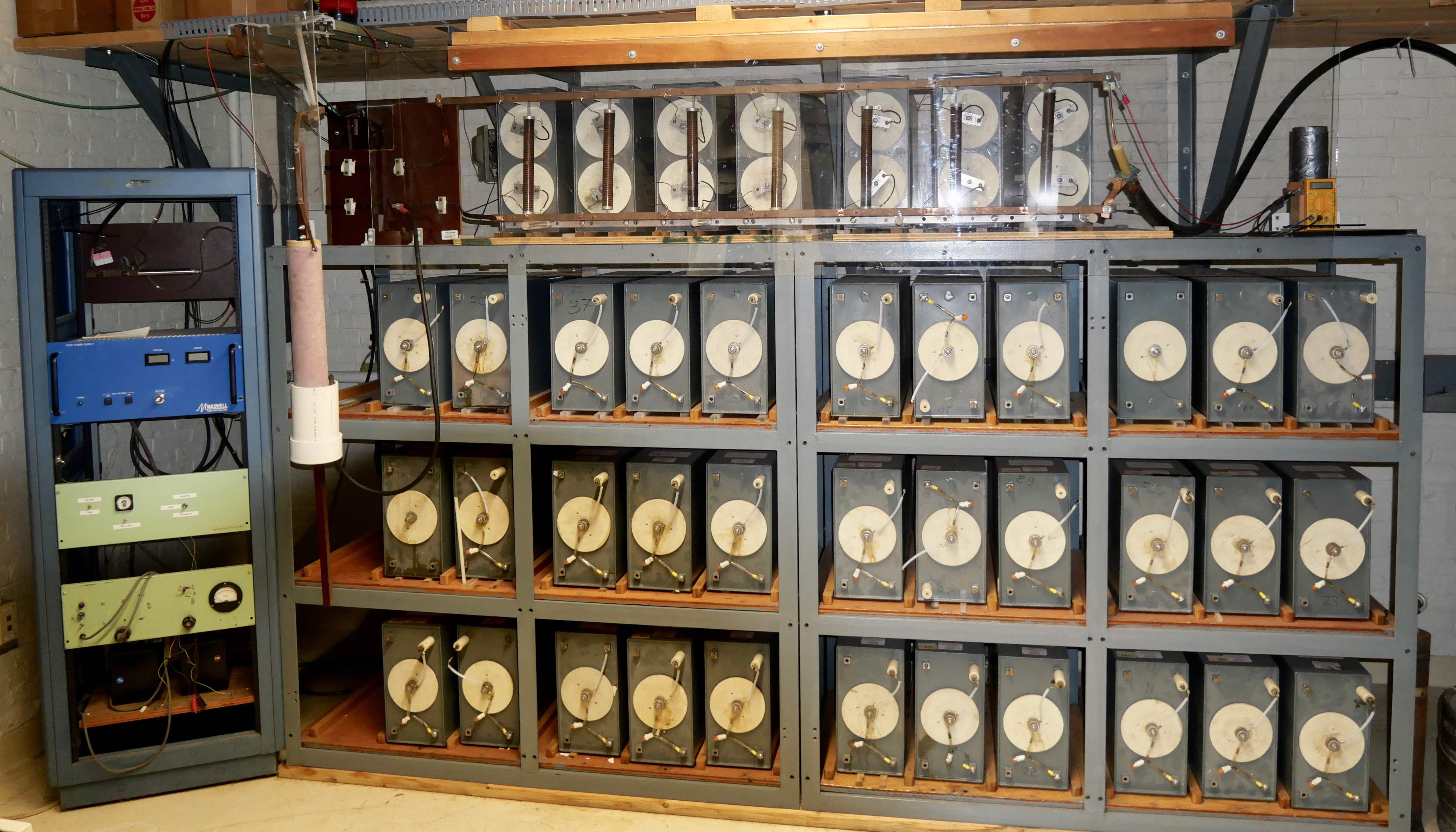Pulsed Magnets
Chuck Agosta - Clark University
50 Tesla Magnet
Pulsed magnetic fields have always been rare in comparison to DC fields, particularly with the advent of superconducting magnets. Access to fields over 20 tesla, however, is still restricted to national facilities and pulsed field laboratories. We have shown that for a modest investment, a single PI can have daily access to fields up to 51 T. In the US our laboratory is the only pulsed-field university facility that has been active for the last 20 years. In our system, the magnet sits in liquid nitrogen. The He-4 Dewar is small, because it only has to cool the sample, in our case a simple one shot He-3 refrigerator. The result is that we can run our experiment on 4-8 liters of helium a day, at temperatures below 1 K, while sweeping our field to well over 30 T.

The above magnet was designed and built at the Katholike University in Leuven, Belgium by the group of Fritz Herlach. Pulsed magnets of this type are unique devices that are designed to withstand impulsive forces with energies similar to a stick of dynamite.
We build these magnets To contain the tremendous forces in these magnets we wind fiberglass, or some other strong fiber wound after each layer of copper wire, and impregnetate the magnetts in epoxy. A picture of a section of a magnet is shown below.


The energy for the pulsed magnet comes from a capacitor bank. Our full bank can store 500 kJ of energy at 5000 Volts. Capacitors are ideal for this purpose because they can release their energy very quickly, and naturally produce a sinusoidal pulse shape when connected to an inductive coil, the magnet. Or capacitor bank is shown below.

Throghput. One of the advantages of pulsed magnets is the potential throughput. After a pulsed the energy from the capacitor bank mostly goes intot the magnet raising its temperature above were it started at 77 K. Depending on the size of the magnet pulse our magnets take 50 minutes to cool after a 50 T shot and 15 minutes to cool after a 30 T shot. This allows us to do many shots a day. As an example in one experiment we managed 195 magnet sweeps over a period of nine days.